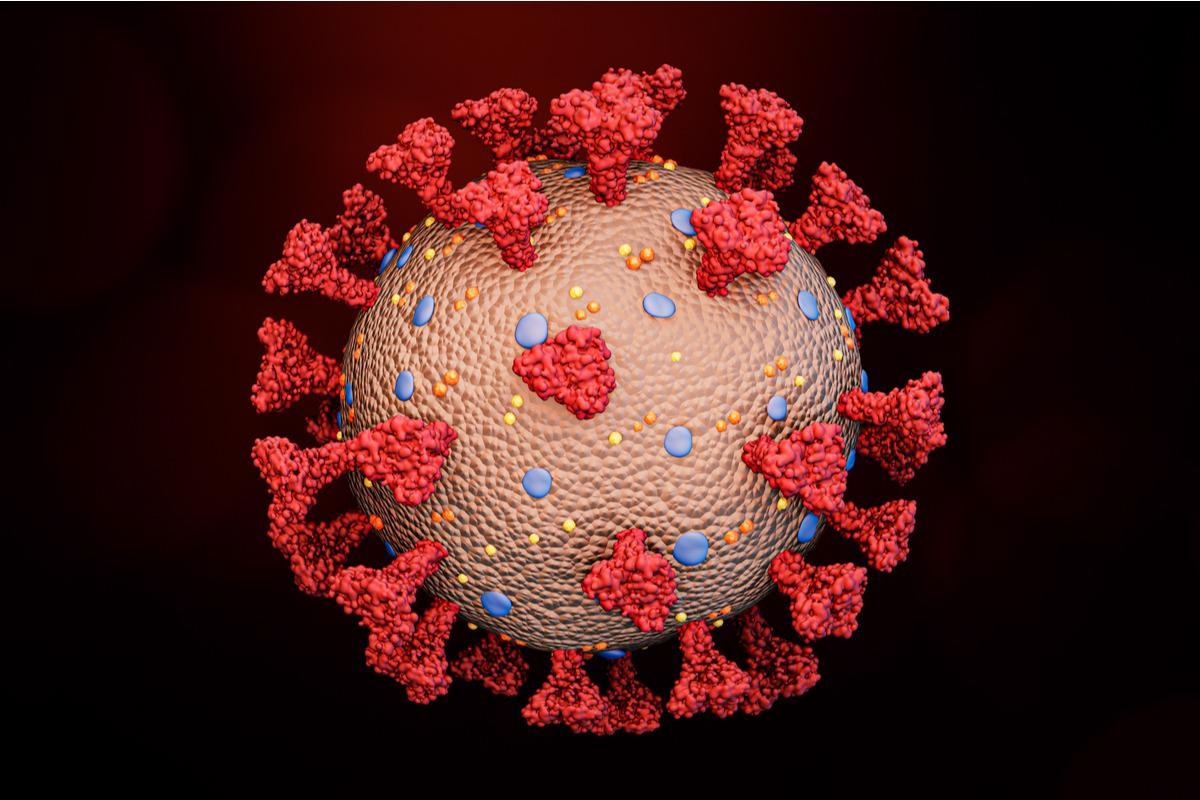In a latest research posted to the bioRxiv* pre-print server, researchers investigated the results of extreme acute respiratory syndrome coronavirus 2 (SARS-CoV-2) spike (S) mutations on antiviral restriction mediated by interferon-induced transmembrane (IFITMs) proteins and guanylate binding proteins (GBPs).

The interferon-stimulated genes (ISGs), parts of innate immunity, encode antiviral restriction components that act immediately as the primary line of protection towards viruses, together with SARS-CoV-2. The GBP2/5 sense an interferon-response activated as a result of SARS-CoV-2 assault in human airway epithelial cells and collectively goal key viral replication steps to induce an antiviral state; likewise, IFITMs proteins act broadly to dam SARS-CoV-2 entry.
Intriguingly, mutations inside the furin cleavage website (FCS) of S protein have an effect on these antiviral restriction components. Subsequently, investigating the impact of GBP and IFITM-mediated restriction is essential to achieve insights into how dominant SARS-CoV- 2 variants of concern (VOCs) are evolving their FCS by buying mutations to reinforce their infectivity and transmission potential.
Concerning the research
Within the current research, researchers investigated whether or not antiviral restriction components, resembling GBP1/5 and IFITMs, may inhibit S cleavage translating in lowered SARS-CoV-2 infectivity. In addition they examined whether or not S mutations have supplied SARS-CoV-2 VOCs capability to flee this restriction; in different phrases, they evaluated the impact of S mutations on sensitivity to endosomal restriction components, together with IFITMs.
Research findings
The research evaluation confirmed that interferon-inducible restriction components GBP2 and GBP5 interfered with furin-mediated cleavage of the S proteins of Wuhan-Hu-1, Alpha, Delta, and Omicron, just like furin inhibition by GBPs. Furthermore, GBP publicity shifted the viral entry route in direction of the endosomal entry. Then again, IFITM1, however not IFITM 2 or 3 ( predominantly positioned inside endosomes) inhibited an infection by SARS-CoV-2 early-lineage Wuhan-Hu-1, in addition to Alpha and Delta VOCs.
Additional, they noticed differential sensitivity of S proteins of VOCs to GBPs and IFITM restriction, because the restriction by GBP2/5 correlated with the differential requirement for furin-mediated S processing. Consequently, S of Center Japanese respiratory syndrome coronavirus (MERS-CoV) was delicate, however SARS-CoV-1 was proof against inhibition by GBP.
Omicron emerged as a novel VOC in being delicate to inhibition by GBP2/5 and IFITM1, 2, and three and evolving in direction of the transmembrane proteases 2 (TMPRSS2)-independent entry pathway. It exhibited much less sensitivity to the TMPRSS2 inhibitor Camostat and extra sensitivity to the cathepsin inhibitor E64d. Furthermore, it was considerably much less infectious than different SARS-CoV-2 isolates on TMPRSS2 expressing Caco2 cells.
As well as, Omicron incorporates the identical P681H FCS-optimising mutation as Alpha; moreover, it has enhanced affinity for ACE2 simply as Alpha and Delta. Thus, researchers speculated that Omicron could be GBPs resistant in pseudoviruses (PVs) assay, just like the opposite VOCs. Nonetheless, Omicron was delicate to GBP2/5, behaving like Wuhan-Hu-1. Furthermore, growing Omicron S incorporation into PVs didn’t rescue them from GBP or IFITM restriction.
The research knowledge revealed that the evolution of Alpha and Delta S additionally contributed to conferring resistance to GBP restriction, and this was not solely as a result of acquisition of an enhanced FCS.
Dialogue and conclusions
Taken collectively, the research knowledge indicated that SARS-CoV-2 is evolving to stability environment friendly host cell entry with evasion of compartmentalized restriction components. Therefore, Omicron has remarkably tailored its S exercise, has develop into much less fusogenic and is delicate to restriction by GBP2/5 and IFITM1/2/3, which intervene with viral fusion and cell entry.
Moreover, in comparison with Wuhan-Hu-1, Omicron incorporates three distinctive mutations (Q954H, N969K, and L981F) inside the heptad repeat area 1 (HR1) of its S that mediates viral fusion. As these substitutions are absent in Alpha and Delta VOCs, they could even be considerably contributing to the variations between Omicron and different VOCs within the context of S fusion, sensitivity to restriction, and tropism.
Total, the mutations in and across the receptor-binding area (RBD), N-terminal area (NTD), and S1/S2 cleavage boundary of Omicron S may be contributing to the distinctiveness of the Omicron phenotype.
In accordance with the authors, related processes have occurred throughout SARS-CoV-2 evolution in hosts and therefore the necessity to escape from neutralizing antibodies turned the dominant selective stress on Omicron. This interaction between evasion of innate and adaptive immunity, and the implications for transmission and tropism, will proceed to affect future SARS-CoV-2 evolution. Subsequently, linking this evolution to phenotype may very well be essential for creating insights into understanding SARS-CoV-2 biology and pathogenesis.
*Essential discover
bioRxiv publishes preliminary scientific studies that aren’t peer-reviewed and, due to this fact, shouldn’t be considered conclusive, information scientific follow/health-related conduct, or handled as established data.
